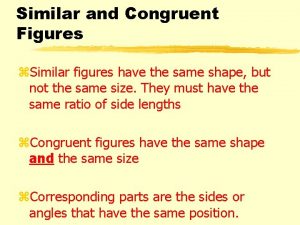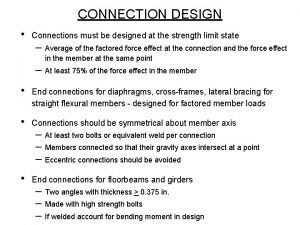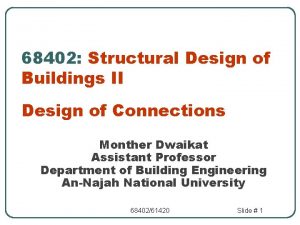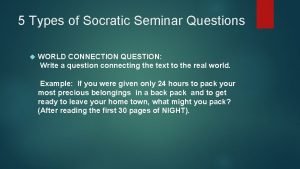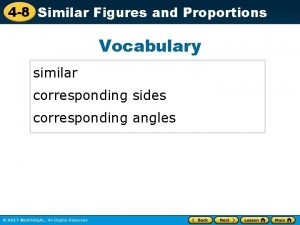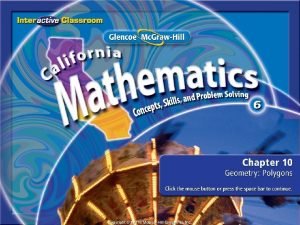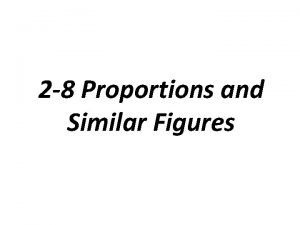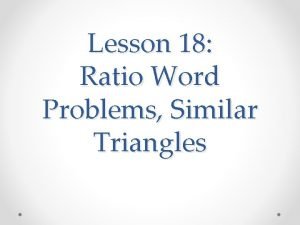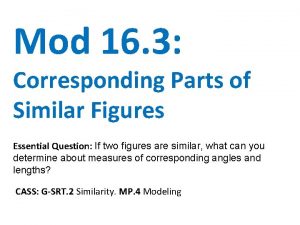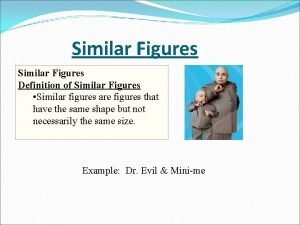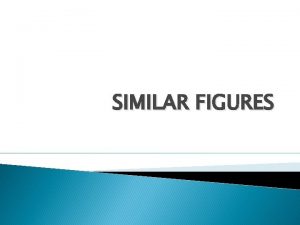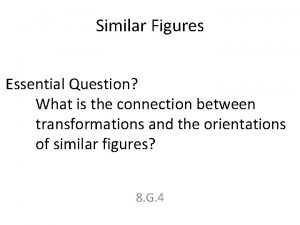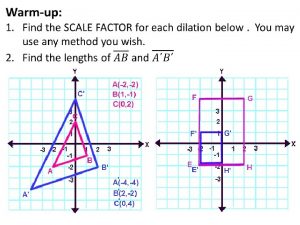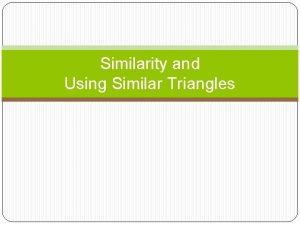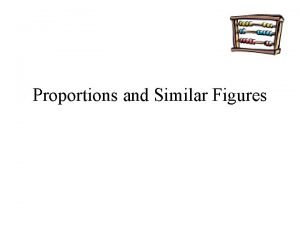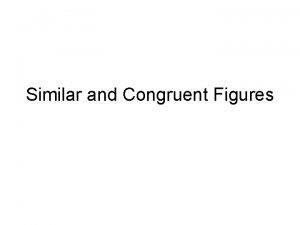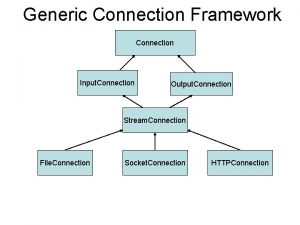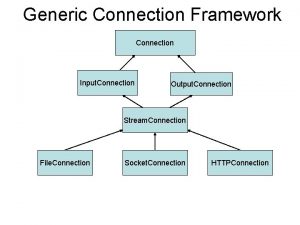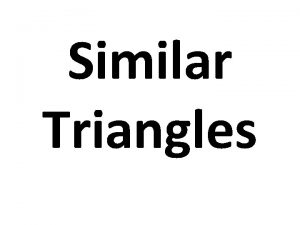Similar Figures Essential Question What is the connection
















- Slides: 16

Similar Figures Essential Question? What is the connection between transformations and the orientations of similar figures? 8. G. 4

Common Core Standard: 8. G ─ Understand congruence and similarity using physical models, transparencies, or geometry software. 4. Understand that a two-dimensional figure is similar to another if the second can be obtained from the first by a sequence of rotations, reflections, translations, and dilations; given two similar two-dimensional figures, describe a sequence that exhibits the similarity between them.

Objectives: • To describe the connection between transformations and the orientations of similar figures.

Combining Transformations Animators, such as those at Pixar, move a digital figure by creating a series of transformations: • Translations (moving the figure around) • Rotations (turning the figure around) • Reflections (looking in a mirror) • Dilations (“Honey, I Shrunk the Kids”) We have already learned that some transformations preserve congruence: • TRANSLATIONS • REFLECTIONS • ROTATIONS

Combining Transformations DILATIONS do NOT preserve congruence, since the measures of corresponding sides are not equal. With DILATIONS, the image and preimage are the SAME SHAPE but NOT THE SAME SIZE When figures have the same shape but not necessarily the same size, the figures are called SIMILAR The symbol for “is similar to” is ~ ORIENTATION is preserved with a dilation.

Combining Transformations In this diagram, the image was formed by a dilation of the preimage. The two figures have the same shape and orientation, but not the same size. We can say that the two figures are SIMILAR △RST ~ △R´S´T´

SIMILAR FIGURES Since SIMILAR FIGURES undergo a dilation where a SCALE FACTOR is involved • the lengths of corresponding sides are IN PROPORTION Since SCALE FACTOR only affects the measures of line segments • the measures of corresponding angles are EQUIVALENT

Combining Transformations SIMILAR FIGURES can be created by a series of transformations WITH A DILATION Remember if the only transformations are translations, reflections, and rotations, the figures are CONGRUENT

Similar Figures Activity #1 Apply the indicated sequence of transformations to the rectangle. Each transformation is applied to the image of the previous transformation, not the original figure. Label each image with the letter of the transformation applied.



Similar Figures Activity #2



Similar Figures When you are told that two figures are similar, there MUST be a sequence of transformations INCLUDING A DILATION that transforms one into the other.

FOLDABLE NON-ISOMETRIC TRANSFORMATIONS DILATIONS (Preserve similarity) (ORIENTATION PRESERVED) Enlargement Reduction SCALE FACTOR: The RATIO used to enlarge or reduce figures. SIMILAR: Having the same shape, but not the same size. The symbol for similar is ~. The image resulting from a DILATION is SIMILAR to its preimage!
 Are all congruent figures similar
Are all congruent figures similar Literary connections examples
Literary connections examples Slip critical connection vs bearing connection
Slip critical connection vs bearing connection A307 bolt shear strength
A307 bolt shear strength Slip critical
Slip critical Costa's level question
Costa's level question Essential non essential fatty acids
Essential non essential fatty acids Examples of socratic seminar questions
Examples of socratic seminar questions Plane figures
Plane figures Pentagon plane figure or solid figure
Pentagon plane figure or solid figure Similar figure proportions
Similar figure proportions Lesson 10-3 similar figures
Lesson 10-3 similar figures Similar shapes and proportions worksheet
Similar shapes and proportions worksheet 2-8 proportions and similar figures
2-8 proportions and similar figures Similar triangles word problems
Similar triangles word problems Corresponding parts of similar figures
Corresponding parts of similar figures Similar figures
Similar figures
